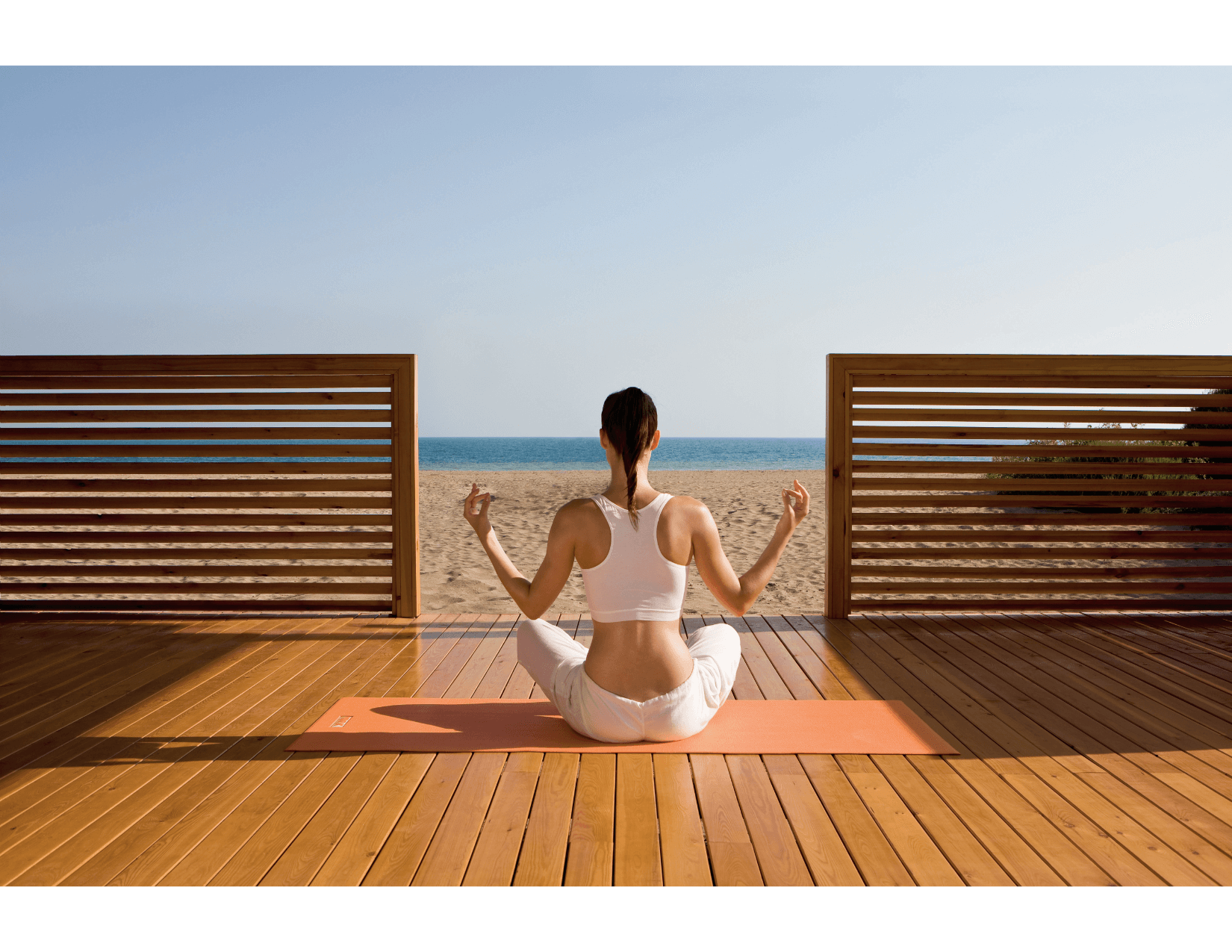You’re tired of letting anxiety symptoms play a significant role in your life. Constant worry, panic attacks, no sleep–the list goes on and on. Luckily, there are tools to help cope.
Meditation is a free and effective practice for decreasing anxiety. But only if you do it right. We’ve gathered five tips straight from meditation experts themselves to help you reach inner peace. Plus, keep reading until the end for three of the best meditations to help squash your anxiety now.
Is Meditation Good for Anxiety?
Yes, researchers at Georgetown University Medical Center found that an alternative mindfulness-based stress reduction practice–aka meditation–was just as effective as using common antidepressants for people with anxiety and panic disorders. But also, when combined with conventional techniques, meditation still successfully helps relieve anxiety.
How Does Meditation Help Anxiety?
Symptoms of anxiety cause intense fear or worry about possible upcoming negative events. In most cases, you’re not anxious about what’s happening in the exact moment you’re in–rather, what might be in the future.
Meditation is a tool that can calm your mind and bring you back into the present moment. “Through meditation you can slowly let go of the things you are holding on to,” says Arnab Datta, MD, a trained meditation teacher and psychiatrist. According to the Mayo Clinic, here’s how meditation helps with anxiety.
Benefits of meditation:
- Lowers your resting heart rate
- Lowers your resting blood pressure
- Improves your sleep quality
- Reduces negative thoughts and emotions
- Increases patience and tolerance
Who Is Meditation Best For?
The great thing about meditation is that it’s a useful tool anyone can use–with no harmful side effects. If you can breathe, you can meditate. In fact, nearly 18 million adults and 927,000 children in the U.S. practiced meditation in 2012. Although, it’s most widely known for helping people with anxiety. With meditation, you can use it alone or as a supplement to an existing treatment plan for anxiety.
5 Tips on How to Meditate for Anxiety
Whether you’re a beginner or an intermediate, learning how to meditate effectively can be a powerful tool for managing a stressful situation and finding balance. Luckily, we’ve found mindfulness meditation techniques from some of the top experts in the industry. Here are five practical tips to help you gain the positive effects of meditation from a psychiatrist, a meditation teacher, and a neurologist.
- Focus on your breath. It doesn’t matter if you’ve been meditating for 20 years or 2 minutes–your mind will wander. The trick to keeping your focus is using your breath as an anchor. “Any time you notice your mind has wandered, take a deep breath and really pay attention to the feeling of it, then re-focus on the meditation,” notes Rachael Kable, a meditation and mindfulness teacher with a bachelor’s degree in Psychological Science.
- Think of meditation like an ocean. If you’re having trouble meditating, try this visualization. Dr. Datta describes how wind (your daily life stressors) will always blow at the ocean’s surface, creating choppy waves–a stress response. However, if you sink deeper into the ocean (close your eyes and slow down breathing), you won’t hear the wind or notice the waves under the water. “Eventually we arrive at a calm and still place that is different from the frenetic waves on the surface,” says Datta.
- Have a dedicated meditation space. It’s human nature to thrive in a routine. And that includes where you meditate. “Creating a specific location for meditation can help get the body and mind ready for meditation, making it easier to drop into your routine,” says Dr. Perlmutter, MD, a Board-Certified Neurologist. Set up a cozy space in your room, in front of the fireplace, or on the couch. Wherever it is, make sure you can return to that location each time you meditate.
- Set realistic goals. Saying you’ll meditate for 1 hour every night might be a stretch for a beginner. Set goals with shorter time frames and build on them as you go. “Start with 2 minute meditations. Once that feels comfortable, increase your sessions to 5 minutes. Then 10 minutes,” says Kable. Start slow–practice makes perfect.
- Try meditating on the go. Anxiety knows no bounds. But it’s possible to meditate anywhere. If you’re feeling anxious while out and about, turn your focus inward. “This practice can be done anytime you’re walking around—simply focus on the act of walking, the feeling of taking each step, the sensations of lifting up your feet and the wind moving past your skin,” notes Perlmutter. You can meditate on the bus, at your desk, and in the grocery store; your mental state is the biggest factor. You name the place and meditation is possible.
Types of Meditation for Anxiety
Meditation doesn’t just come in one form. There are many different ways to practice, each with its own unique benefits and meditation techniques. Let’s take a look at the types of meditation to ease anxiety.
Body Scan Meditation
A body scan meditation involves systematically scanning your body from head to toe, slowly bringing awareness to physical sensations in each part along the way. Imagine each part of your body lighting up as you focus on it for a minute or two. This practice helps move your attention from feelings of anxiety toward bringing awareness to your body in the here and now.
Guided Meditation
Guided meditations are typically led by an instructor either during a live yoga class, meditation group, or through a video or audio recording. During your meditation sessions, flow through calming visualizations that transport you to peaceful environments that bring happiness. Your meditation guide will ask you to imagine vibrant colors, breathtaking scenery, or scents that evoke inner peace at your location of choice.
Mantra Meditation
Meditations don’t have to be silent. For this type of meditation, you use a word or phrase to attach peace to. Essentially, you say your chosen word repeatedly when you’re anxious–as a mantra. This mantra is a focus anchor used as a distraction from your stressors. Some example mantras are: I am okay, I can get through this, I am at peace, and I am calm.
Need Help Now? Listen to These Meditations
If you’re anxious at this moment, jump right in and follow along with these top-rated meditations to help ease anxiety. Be sure to save these and reference them for later.
8-Minute Grounding Body Scan
by Katie McLaughlin
Flow through a gentle scan as you get in touch with your body and your breath. This guide’s soothing voice will wash your anxieties away from head to toe and bring you back to stillness with this body scan. Calm is only a quick 8 minutes away.
10-Minute Guided Imagery Meditation
by Dr. Martin Rossman
Help your mind relax after a long day with this 10-minute guided imagery meditation for anxiety. You can even use this as part of your morning routine to start the day off with a calm mind. Add to your to-do list and listen to this guided visual meditation daily for the ultimate relaxing routine.
10-Minute Mindfulness Meditation
by Calm
Take just 10 minutes out of your day to close your eyes and let the soothing ocean wave sounds in this meditation wash over you. Follow along as you are guided toward letting go of uneasiness. Lessen your anxiety, worry, and stress levels while enhancing self-acceptance in this 10-minute mindfulness practice.




